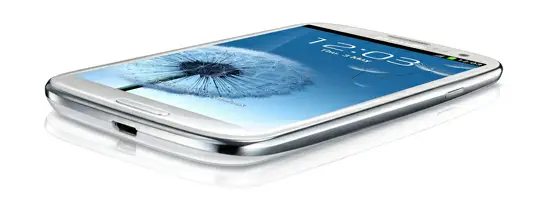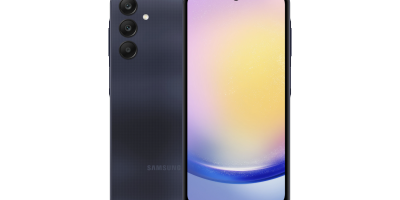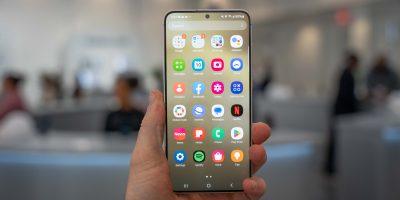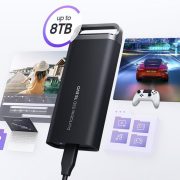
Samsung is launching a new brand dubbed SAFE, and they are doing it with one of the most anticipated smartphone launches of the summer. SAFE, which stands for Samsung Approved for Enterprise, is “a comprehensive approach to making Android devices secure and manageable.” In other words, Samsung is pre-loading SAFE devices with a suite of enterprise tools including Microsoft Exchance ActiveSync, support for VPN and Mobile Device Management, and onboard AES-256 bit encryption.
The first handset to earn the branding will be the Galaxy S III, and the SAFE version will be available from all US carriers supporting the devices starting in July. Samsung’s hope is that devices falling under the banner will help company’s to cut down on the fragmentation often associated with Android and create less headaches for the IT professionals in charge of keeping enterprise networks running smoothly.
To encourage users to move to the Galaxy S III or other future SAFE devices, Samsung is offering a trade-up program dubbed SAFE2Switch. More details on the program and the SAFE Galaxy S III can be found in the news release below.
Samsung Makes Android SAFE™ for Enterprises, Offers Trade-In Program to Upgrade to the Galaxy S III
Samsung is the First to Launch a Quality Assured, Enterprise-Compliant Android Smartphone
DALLAS — June 18, 2012 — With the AndroidTM operating system projected to be the No. 1 platform for enterprise smartphones by 2013[1], Samsung Telecommunications America, LLC (Samsung Mobile) is simplifying enterprise adoption with the introduction of SAFE (Samsung Approved for Enterprise) and the first SAFE-branded smartphone in the United States, the Galaxy S® III, which will be available at AT&T, Sprint, T-Mobile, Verizon Wireless and US Cellular by July. To aid prosumers and corporations in accessing the most innovative smartphone on the market, Samsung is also introducing SAFE2SWITCH, a trade-up program that offers competitive pricing for qualifying smartphones for both individuals and enterprise customers.
SAFE – Optimized for the Enterprise
SAFE provides a comprehensive approach to making Android devices secure and manageable by systematically meeting the rapidly evolving needs of IT and the growing number of businesses allowing employees to “bring your own device” (BYOD) to work. Samsung created SAFE as a way to defragment the Android OS across multiple versions from Gingerbread to Ice Cream Sandwich at U.S. carriers. Out of the box, the SAFE-branded Galaxy S III supports a full suite of enterprise-ready features and capabilities with support for 338 IT Policies.[2] This includes on-device AES-256 bit encryption, enhanced support for Microsoft Exchange ActiveSync and support for industry-leading Virtual Private Network (VPN) and Mobile Device Management (MDM) solutions.Over the last 12 months, Samsung has surpassed its next nearest handset and smartphone competitors to become No. 1 globally[3] and now has its sights set on the enterprise. Working closely with enterprise customers and industry-leading solutions providers, Samsung developed a thorough quality assurance program. This program begins with MDM and VPN solutions providers using Samsung’s software development kit to deeply integrate their solution on the SAFE device. Once the development effort is completed, Samsung and the solution provider then thoroughly test and verify the device’s support for the MDM and/or VPN software. This collaboration, coupled with the testing process, creates solutions that are optimized for SAFE devices and enterprise use including adoption within regulated industries such as healthcare, financial services and government.
“It’s now safe to say that the ‘Next Big Thing in Enterprise’ is here with the near-term availability of SAFE-branded Galaxy S III devices at five U.S. carriers,” said Tim Wagner, Vice President and General Manager of Enterprise Sales at Samsung Mobile. “The highly desirable, SAFE-branded and QA-tested Galaxy S III smartphone systematically defragments Android to provide a consistent level of IT compliance for individuals who demand the very best in both their personal and professional lives.”
Galaxy S III – Powerful, Collaborative, Secure
The Galaxy S III offers secure features and capabilities that may be used in a wide range of business situations to improve efficiency and productivity.
- AllShare Play – Group Cast: Securely share PowerPoint presentations and PDFs with business partners also using Galaxy S III devices
- Share Shot: Quickly and easily compile and share photos with colleagues and contacts
- S Beam One Touch Sharing (NFC and Wi-Fi Direct): Quickly exchange contact and meeting information or company documents by simply tapping phones together. S Beam can also be controlled via an MDM solution.
- Intelligent Display and Motion: Focus on the job at hand with intuitive features like Direct Call and Smart Stay
- HD Super AMOLEDTM Display: Review detailed plans or blueprints with brilliant 4.8” HD Super AMOLED display on second-generation rugged Corning® Gorilla® Glass
- Samsung TecTiles: NFC programmable tags and mobile application transform how businesses, both large and small, engage their customers
SAFE2SWITCH Prosumer / Enterprise Trade-In Program
With the launch of the SAFE-branded Galaxy S III, Samsung is announcing the availability of a trade-up program called SAFE2SWITCH which simplifies the transition to Samsung SAFE devices from Samsung or other manufacturers’ smartphones. Both prosumers and corporate customers alike can take advantage of this program which offers very competitive trade-in values in real-time from their existing smartphone or Internet-connected device. For more details, visit www.samsungsafe2switch.com.










I wonder if there’s a patent on the whole SAFE thing (eg, “Securing Apple’s Future in Enterprise”)?
I wonder if the Samsung Galaxy S3 units that are shipping now will have this SAFE technology included or if they will be upgradeable to include it?
I wonder if standard handsets can still be used in an enterprise setting or will they force us to go with these SAFE units…
standard galaxy note handsets have VPN, encryption, exchange ability and the junos app is available on the samsung app store and android market for those that may be interested in that app
https://play.google.com/store/apps/details?id=net.juniper.junos.pulse_samsung_newsig.android&hl=en . not sure about device management remotely by admin. but they could install other security apps like already found on the market that can remotely manage the device which are available for individuals as well. So i dont see whats special in this announcement other than marketing speak
forgot to give the youtube link for the app
http://www.youtube.com/watch?v=xnZn2Doft-s&noredirect=1
see more details of enterprise features … device encryption 256 algorithm, encrypted messaging, server side global address book / schedules etc, SAP databases, cisco webex, junos, EAS2010, on the galaxy note in the videos below http://www.youtube.com/watch?v=tba4QEGns40&feature=results_main&playnext=1&list=PL9218DDE4BC66B09E
and http://www.youtube.com/watch?v=y5jgaKEniL8&feature=results_main&playnext=1&list=PLC61264FFDECAD22C
and http://www.youtube.com/watch?v=9g767x9bQZQ
and http://www.youtube.com/watch?v=2OkMfkU8UfQ
so you see all the “SAFE” features of the S3 are already existing on the samsung galaxy note and the announcement is just better marketting and branding of the enterprise features of samsung.
so… Samsung hopes to cut back on fragmentation by releasing a slightly different variant of the exact same phone o_O? Pls explain htf that makes sense…
Wont that help increase fragmentation? Why not just make all SIIIs “SAFE”? THAT would help with fragmentation. Having a “SAFE” and unSAFE varient of the same device just makes it even more fragmented Samsung…….
Because if they were all “SAFE”, then it’d just add cost and confusion for normal users.
Also, I’d bet that SAFE requires that you can’t use insecure lockscreen modes, which would annoy a lot of people who don’t need that initial security
I’m not sure how SAFE works, but the way I’d do it is to lock the phone down heavily. No apps could be installed, from 3rd party sources or from Google Play. Apps could only be installed with permission from the system administrator. It would also force heavy unlocking security and encrypted data. Only apps which the system admin has personally OK’d will be installed, only hardware that the system admin allows will connect to the business network/VPN.
This isn’t something you want forced on you.
I’ve mentioned this before, I think. If I was RIM, this is what I’d do – if it’s not too late. Scrap my own OS, make a locked down version of Android and build the Blackberry experience on this – keyboard, messaging, security, enterprise tools, etc.
This would decrease fragmentation in a way, in that if Samsung (or RIM, in my hypothetical case) do it properly, a Samsung Galaxy S 4 or Note 2 or whatever will be able to be configured pretty much seamlessly. Fragmentation still exists more than ever, but the system administrator isn’t affected and that’s key for enterprise stuff.
my best friend’s aunt got paid $14842 the prior week. she is getting paid on the internet and bought a $494800 house. All she did was get fortunate and follow the steps shown on that web site top of this comment
Wouldn’t surprise me if the bootloaders on these phones were encrypted. I wonder if they’ll offer versions without cameras as well for jobs that require them.
It does seem like most of these features outside of the AES256 bit encryption are available in the stock GS3, so I’d assume they’ll have to differ in some other way as well…
I wonder if there is going to be a price difference for the SAFE version of the S3
Values way too low: Droid X: $20 Droid X2: $55
Better prices on Ebay or keep as a wifi Pandora player